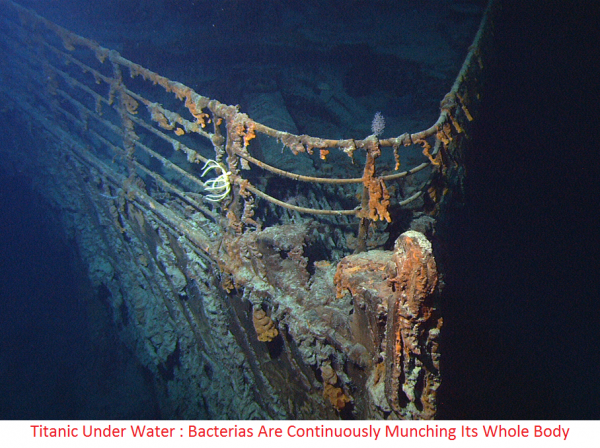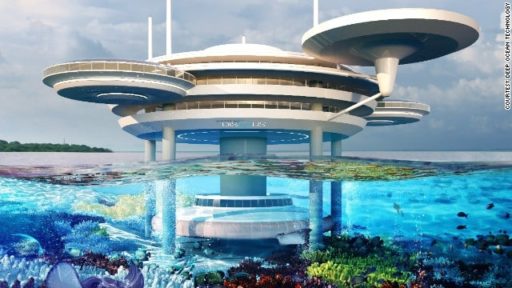Titanic, the largest passenger ship in the year of 1912, sank on its maiden journey from England to New York 14 April 1912, after hitting an iceberg in mid-Atlantic. It is still under water. Today it has completed the 100th year of the tragedy. The ship, broken into peices, stayed under water for 100 years now. Just a couple of weeks ago, Director James Cameron has visited the wreckage site, and I’m sure some enthusiasts would also love to do. But that might not be possible one day, as a new discovery suggests. Biologist and geologist Henrietta Mann from Canada has discovered that, the way Bacteria under water are continuously eating up the sunken hull of the Titanic, within less than 30 years, there may be nothing left of the Titanic except a heap of ‘rusticles.’
In 1991, there was a scientific expedition to the famous wreck 12,400 feet (3,780 meters) underwater. It revealed a formation of rust that seemed to look like icicles or stalactites hanging from the ship. Basically, they occur underwater when wrought iron oxidizes. Biologist and geologist ‘Henrietta Mann’ at Dalhousie University from Canada who has been studying on Titanic’s wreckage collected the samples from the Bedford Institute of Oceanography and especially scrutinized those samples under an electronic microscope. She was scrutinizing dozens of bacteria under the electron microscope. Surprisingly, she discovered that, it wasn’t a chemical process of oxidization that was happening : rather it was the bacteria behind those particular deep water formations. Among those dozens of bacteria, one bacteria was never seen before. In fact, this is that bacteria which is continuously eating the ship. She named the bacteria ‘Halomonas Titanicae’ which slightly have the reference of the ship.
Halomonas Titanicae is 1.6 micrometer long and obviously can’t be seen or measured through the naked eyes. Mann found that, the bacteria were all over the 50,000 tons of steel and were having a great banquet. She mentioned that, over the years, different kinds of more and more species of bacteria have been attracted to the sponge like ‘rusticles’. After this marvelous discovery, it is clear to us that, all of the old ships, oil rigs and cargo that have fallen to the bottom of the sea is in danger to their existence. No doubt, bacteria will eventually dispose of it all.
Any way, apart from the movie Titanic, James Cameron has made a new computer generated imagery of how Titanic sank and reached the ocean floor. This animation describes more better than previous computer generated imagery. If you want to see the video, just click here. To know more about Titanic’s current situation, don’t forget to watch the History Channel on 15 April. There’s a 2 hour exclusive documentary waiting for you. But for now, click here to know more about Titanic’s latest wreckage.
Source : Yahoo News




